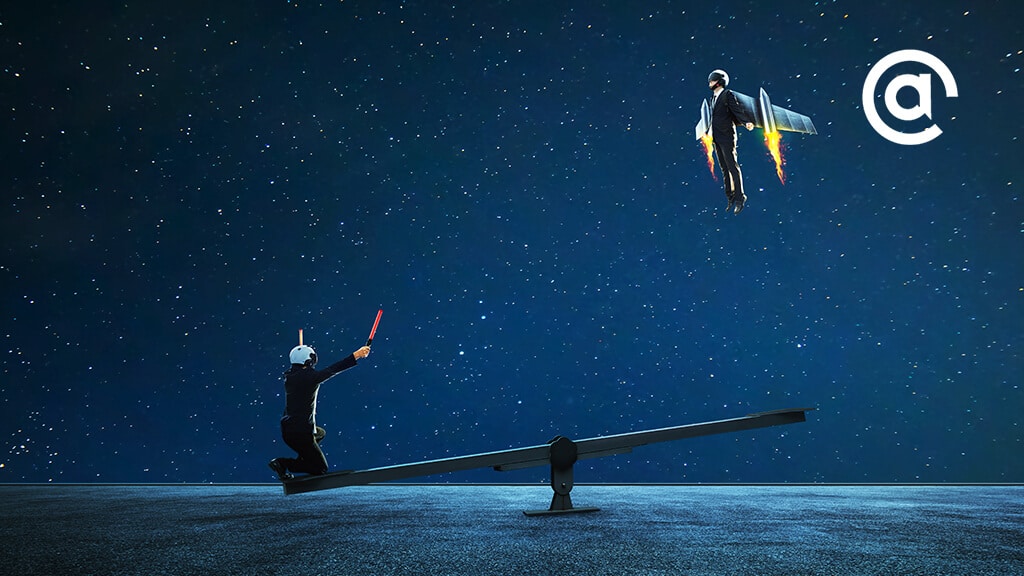
AIMCLEAR: Let’s start with some definitions. How would you define the “media buyer” agency model?
Susan: Media buyer used to be a more relevant moniker for agencies, in my opinion. Way back when there was mostly paid search or some banner ads, it was easy to just buy media. The targeting and creative were limited, so media buyers played a straight numbers game of bids vs. profit. Engagements were more simplistic: Marketers were given a budget for paid search and told to make it work well.
The digital marketing environment itself was also pretty straightforward. Being so paid search heavy, user data essentially told advertisers and brands what users wanted.
That data facilitated a fairly simple one-to-one connection, so marketers could just “buy media,” and it operated mostly in its own world.
AIMCLEAR: What’s different about a partner agency model?
Susan: The partner agency model focuses on a holistically integrated relationship with the brands an agency serves. As multi-touch attribution and multiple device types became the norm, integration with non-paid areas has become crucial for the overall marketing machine to work well for brands.
Partner agencies know and recognize this emerging imperative, and have developed a keen understanding of where paid media efforts can integrate, enhance, and supplement the other marketing areas within a company. They understand the role their specialities serve within a greater marketing ecosystem, and the nuances that exist in the reality of imperfect measurements.
AIMCLEAR: Why is the media buyer model no longer enough for digital agency success?
Susan: A myopic, elementary focus on paid and how the platforms take credit (attribution) create problems on several levels.
First, such a focus can cause a disjointed user experience for consumers. For example, consumers may get bombarded with emails with messaging that are different from what they’re served in other advertising environments. There may be no alignment on where different users are in the journey when different marketing teams don’t collaborate or consider one another’s goals.
A media buying focus can also create inefficiencies in time or money. One of the things we’ve run into heavily in 2018 and 2019 are brands that put all the weight into paid media while neglecting other areas of marketing. They have now painted themselves into a corner with increasing competition, higher media costs, and lower margins.
The lack of diversification and attention to owned channels usually comes from media agencies reporting on a lot of numbers and a brand seeing that as the quickest way to turn a profit. These numbers are typically self-reported by the media platforms, totally neglecting the nuances in real media attribution. It appears the platform either does or does not give an immediate upside, and then all or nothing decisions about how money is spent on those platforms are made. The bigger, long-term picture winds up not being a factor.
While that can work in the short-term, agencies that focus on partnership with the client better strategize ways to turn paid media investments into customers that they own beyond the first sale; in other words, an environment that doesn’t rely 100% on paid.
Agencies that are simply paid by how much media they place and manage focus more on short term gains for the agency and client alike.
AIMCLEAR: What are some unique characteristics of a partner agency?
Susan: A partner agency is comprised of both channel experts and holistic digital strategy know-how. On its staff are people who know exactly which boxes to check in each platform, as well as those who understand intrinsically how all these channels feed into each other.
The latter group aren’t as focused on how much media to buy as they are on the ultimate company goals, so they can recommend how their speciality fits into that framework.
A partner agency looks beyond short-term, top-of-funnel metrics. For example, in the case of a long-term B2B client, the agency cares more about cost per sale vs. cost per lead. They know and understand how to draw those final outcomes back to the top-of-funnel efforts, and optimize that way.
AIMCLEAR: Why would businesses be better off working with a partner agency?
Susan: Partner agencies set brands up for longer-term success. In the short term, what they do can feel in conflict with “get all the sales we can each day,” because it requires strategies that have a longer sales arc and a big picture vision.
A partner agency understands the necessary balance between managing and reacting to profit goals that have to be met, but also being willing to invest funds towards building the future. Many firms can effectively manage simplistic media buys, but they lack the data and development know-how to appropriately invest in brand awareness media and measure the outcomes.
A partner agency always keeps their clients’ long term goals in sight, and actively builds roads to get them there in parallel with keeping the day-to-day results firing on all cylinders.









